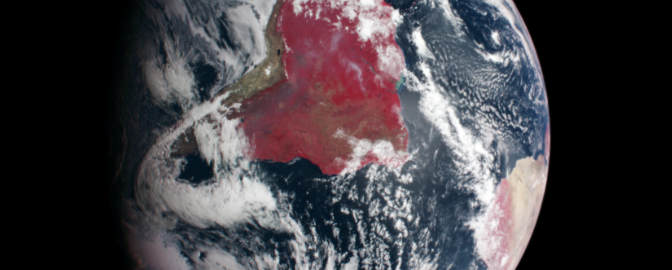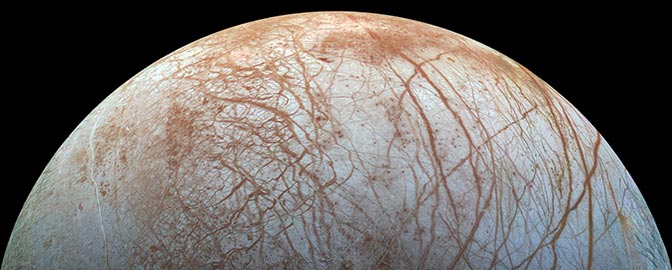How astronomers rank dangerous asteroids (and what that means for you)

Written by
Asa Stahl, PhD
Science Editor, The Planetary Society
June 27, 2025
As an astronomer, headlines that scream about “killer space rocks” and “doomsday asteroids” scare me almost as much as the threat of an actual asteroid impact. Every time an asteroid has some small chance of hitting Earth, some news outlets seem to ring in the apocalypse. And every time, the warnings of armageddon get called off just as quickly as they began.
It’s like the story of the boy who cried wolf. With so much sensational coverage of asteroids that turn out to be harmless, we might not take it seriously if we ever do discover an asteroid we need to deflect ASAP — when lives, cities, and maybe all of civilization is at stake.
This is why astronomers invented the Torino scale.

The scale you hope to never use
Back in 1999, astronomers meeting in the city of Turin (“Torino,” in Italian) agreed on a scale to give people a quick sense of how worried they should be about an asteroid or comet. Just like “category 5” means you should expect a major hurricane instead of a common thunderstorm, the Torino scale tells you how severe a danger is on its way. It also acts as a guide on how experts, governments, and the wider public should respond.
The entire scale goes from zero to 10. The levels change based on an object’s chance of hitting Earth, and how much energy the impact would have if it did. Bigger and faster-moving asteroids hit harder: while an asteroid the size of a basketball court could be as explosive as a 1-megaton nuclear bomb, a kilometer-wide asteroid would be tens of thousands of times more explosive.
Though the Torino scale applies to both asteroids and comets, we only use the word “asteroid” in our descriptions for clarity.
White zone: All clear
Level 0 asteroids pose essentially no danger to Earth. They either have less than a one-in-a-million chance of hitting us, or they are small enough to mostly burn up in the atmosphere and not harm anyone.
Green zone: Small, passing threats
Level 1 asteroids have some small chance of hitting Earth, not more than 1%. But if one did hit Earth, the impact would be at least as explosive as a nuclear bomb. As astronomers take more measurements of these asteroids and get a better sense of their orbits, though, almost all will drop from Level 1 to Level 0 — so there’s no need for the public to take notice. Since 2002, somewhere between zero to six asteroids have reached Level 1 every year before dropping down to Level 0.

Yellow zone: Pay attention
This is when things begin to get dicey.
At Level 2, an asteroid is explosive enough to wipe a city off the map. The odds of a larger impact can be higher than in Level 1, but still max out at 1%.
At Level 3, an asteroid has a 1-99% chance of hitting Earth. If it did, the impact would be at least as explosive as a nuclear bomb, and possibly powerful enough to wipe a city off the map. Still, most Level 3 asteroids will drop down to Level 0 with more data. It only makes sense for the public to pay attention if the asteroid is projected to impact soon, within the next 10 years.
Level 4 asteroids have the same odds of hitting Earth as in Level 3. But if a Level 4 asteroid hit Earth, the impact would at least be enough to wipe a city off the map, and at most could demolish an entire region — say, a state roughly the size of New Jersey, or a country roughly the size of The Netherlands. Only one asteroid in history has ever been rated this highly: Apophis, which is now rated Level 0.

Orange zone: Serious threats
Level 5 asteroids are similar to those in Level 4, but with a slightly higher chance of more explosive impacts. Astronomers should figure out ASAP whether this sort of asteroid will really hit. If the asteroid is projected to impact soon, governments may want to begin planning for a potential impact.
At Level 6, asteroids have only a 0.01-1% chance of hitting Earth — but if one did hit, the impact could devastate the entire planet, trigger mass extinctions, and potentially even end civilization. Such asteroids are at least about a kilometer wide. The asteroid that led to the dinosaurs going extinct was roughly the size of Manhattan, for example. Governments should start to plan for the impact of a Level 6 asteroid even if it is decades away.

Level 7 asteroids are as potentially devastating as in Level 6, but their odds of impact are higher, between 1-99%. Governments should come together to figure out ASAP whether a Level 7 asteroid will hit. They should begin planning for an impact even if it’s a century away.
Red zone: Danger incoming!
At Level 8, an asteroid has a greater than 99% chance of hitting Earth. A collision is now all but certain. Unless something is done to stop it, this impact would be at least as explosive as a nuclear bomb, and at most powerful enough to wipe a city off the map. Impacts like this happen once roughly every 100 to 10,000 years.
Level 9 asteroids have a greater than 99% chance of hitting Earth and could demolish a region the size of a city or small country if they did hit. Impacts this large happen every tens or hundreds of thousands of years, on average.
A Level 10 asteroid is the doomsday scenario that tabloids and scifi movies talk about. This is an asteroid with a greater than 99% chance of hitting Earth, and one large enough to devastate our planet, trigger mass extinctions, and potentially end civilization. Thankfully, impacts like this only happen roughly once every few hundred thousand years.We’ve also found more than 90% of the objects large enough to pose a threat like this, and none are on a collision course.
Now, next time an asteroid like Apophis or 2024 YR4 makes the news, you can look at its Torino rating and ask yourself: does this spell catastrophe, clickbait, or something in between?
Support our core enterprises
Your gift today will go far to help us close out the year strong and keep up our momentum in 2026.
Donate

 Explore Worlds
Explore Worlds Find Life
Find Life Defend Earth
Defend Earth


